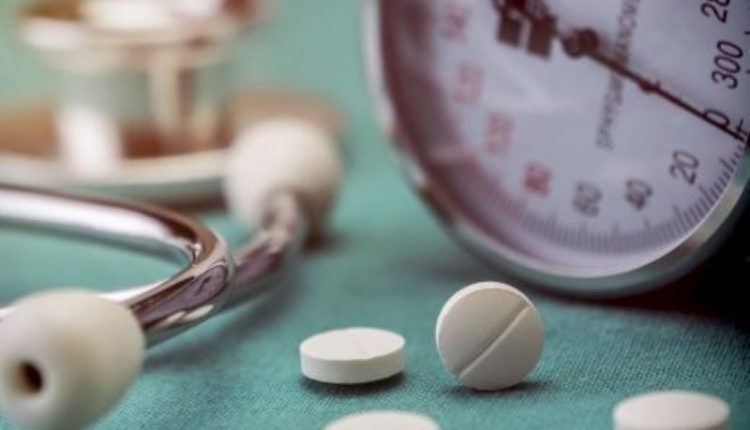
How to conduct antihypertensive treatment? An overview of drugs
The choice of drug with which to start antihypertensive treatment is always guided by an evaluation of the pros and cons of the various drug categories
Once treatment has begun, however, it is mainly conditioned by the efficacy and tolerability of the drug in the individual patient.
The efficacy of the various antihypertensive drugs is in fact superimposable at the population level: the extent of the drop in blood pressure is directly proportional to the pre-treatment blood pressure values and, in unselected hypertensives, all antihypertensives lead to a satisfactory response in 50-60% while they are poorly effective in the remaining 40%.
Antihypertensive drugs, which treatment?
For this reason, even after carefully assessing the individual patient, we are still unable to predict what his or her response will be to our chosen treatment.
Indeed, the rationality of the choices may eventually be overwhelmed by the evidence of the results and drugs that are theoretically unsuitable for the patient may instead turn out to be useful. In the event of an unsatisfactory response it is possible to
- replace the drug initially chosen because it proved ineffective in reducing blood pressure (‘side stepping’)
- resort to pharmacological combinations (‘step up’).
Precisely because it is not possible to predict the most effective drug a priori, another way of conducting antihypertensive therapy is ‘step down’.
It is carried out by starting directly with a pharmacological association, to suspend, when the therapeutic objective is reached, one of the components of the association at a time in order to identify the one responsible for the greatest efficacy.
Treatment with a stable patient
When the tension values normalise, the patient should be advised to keep the therapy unchanged, even if follow-up visits are thinned out.
During chronic therapy, quarterly blood pressure readings should be taken in the outpatient clinic, while monthly measurements may be taken at home by the patient or a family member.
Measurements should be recorded in a diary, which will be used to monitor the pressure control achieved, but should not become a guide to self-prescription by the patient.
In patients with biochemical parameters within limits before the start of therapy, annual monitoring of creatinine, cholesterolaemia, glycaemia and triglyceridaemia is recommended.
In the presence of diuretic therapy it is also recommended to check potassiemia and uricemia after one and six months of therapy.
ອ່ານຍັງ:
ມີຊີວິດສຸກເສີນຫຼາຍຂຶ້ນ…ສົດ: ດາວໂຫລດແອັບຟຣີໃໝ່ຂອງໜັງສືພິມຂອງເຈົ້າສຳລັບ IOS ແລະ Android
Thrombosis: Pulmonary Hypertension ແລະ Thrombophilia ແມ່ນປັດໃຈສ່ຽງ
Pulmonary Hypertension: ມັນແມ່ນຫຍັງແລະວິທີການຮັກສາມັນ
ຢາສໍາລັບຄວາມດັນເລືອດສູງ: ນີ້ແມ່ນປະເພດຕົ້ນຕໍ
ຄວາມດັນເລືອດ: ເມື່ອໃດທີ່ມັນສູງແລະເວລາໃດມັນເປັນປົກກະຕິ?
ປະເມີນຄວາມສ່ຽງຂອງທ່ານຕໍ່ຄວາມດັນເລືອດສູງອັນດັບສອງ: ສະພາບການຫຼືພະຍາດໃດທີ່ເຮັດໃຫ້ຄວາມດັນເລືອດສູງ?
ການຖືພາ: ການກວດເລືອດສາມາດຄາດຄະເນສັນຍານເຕືອນ preeclampsia, ການສຶກສາກ່າວວ່າ
ທຸກຢ່າງທີ່ເຈົ້າຕ້ອງຮູ້ກ່ຽວກັບ H. ຄວາມດັນເລືອດ (ຄວາມດັນເລືອດສູງ)
ການປິ່ນປົວທີ່ບໍ່ແມ່ນຢາຂອງຄວາມດັນເລືອດສູງ
ການປິ່ນປົວດ້ວຍຢາສໍາລັບການປິ່ນປົວຄວາມດັນເລືອດສູງ
Hypertension: ອາການ, ປັດໃຈຄວາມສ່ຽງແລະການປ້ອງກັນ
ເດັກນ້ອຍທີ່ມີການນອນຫຼັບໃນໄວລຸ້ນອາດຈະເປັນໂລກຄວາມດັນເລືອດສູງ
ຄວາມດັນເລືອດສູງ: ຄວາມສ່ຽງຕໍ່ຄວາມດັນເລືອດສູງແມ່ນຫຍັງ ແລະຄວນໃຊ້ຢາແນວໃດ?
ອາການແຊກຊ້ອນຂອງອະໄວຍະວະຂອງ hypertension
ເສັ້ນເລືອດຕັນໃນສະແດງອອກແນວໃດ? ສັນຍານທີ່ຕ້ອງລະວັງ
Vasculitis Pulmonary: ມັນແມ່ນຫຍັງ, ສາເຫດແລະອາການ



